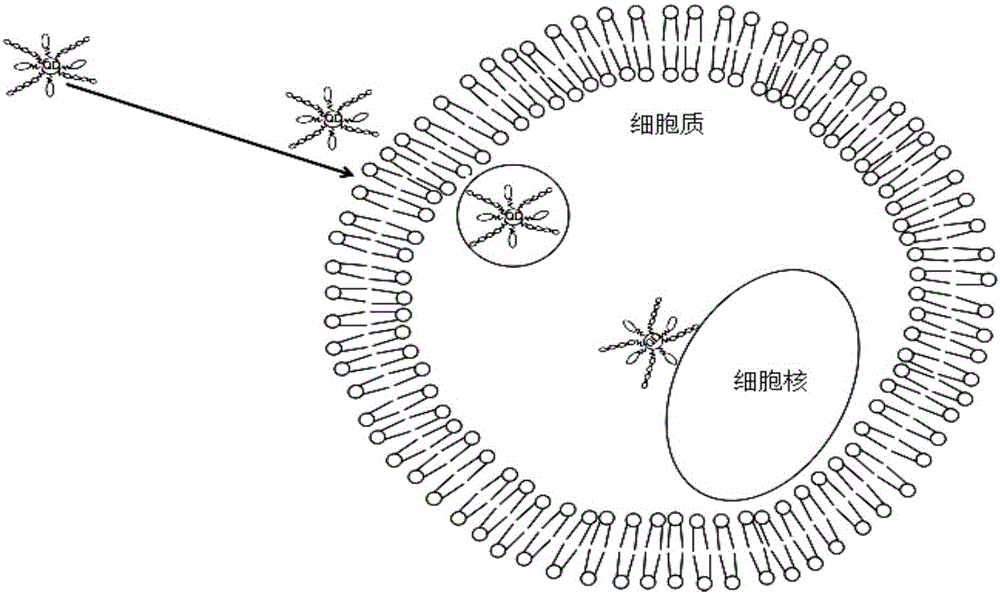Super-resolution optical imaging probe for living cells and preparation method of super-resolution optical imaging probe
An optical imaging and super-resolution technology, applied in chemical instruments and methods, material analysis by optical means, scientific instruments, etc., can solve the problems of poor photostability, insufficient quantum yield, poor targeting specificity, etc. To achieve the effect of simple and convenient operation, saving time cost and economic cost, and low cost
- Summary
- Abstract
- Description
- Claims
- Application Information
AI Technical Summary
Problems solved by technology
Method used
Image
Examples
Embodiment Construction
[0017] Below in conjunction with embodiment the present invention will be further described.
[0018] The quantum dots involved in this example are CdSe / ZnS oil-phase quantum dots, and their fluorescence emission wavelength is 640nm; the carboxyl small molecule ligand involved is thioglycolic acid; the cell membrane penetrating peptide involved is YGRKKRRQRRR, and the nucleic acid aptamer involved The sequence is 5'-NH 2 - TTGGTGGTGGTGGTTGTGGTGGTGGTGG-3'; the cells involved are HeLa cells.
[0019] When preparing the probe, first take 500 μL of CdSe / ZnS quantum dots, add 1 mL of methanol and centrifuge at 3000 rpm for 10 min, discard the supernatant and disperse the precipitate into 2 mL of chloroform. After adding 100 μL tetramethylammonium hydroxide and 100 μL thioglycolic acid, stir vigorously for 2 h. Add 2 mL of deionized water, and collect the quantum dots modified with carboxyl ligands in the upper layer after static layering.
[0020] After adding 4 mg of 1-(3-dimet...
PUM
 Login to View More
Login to View More Abstract
Description
Claims
Application Information
 Login to View More
Login to View More - R&D
- Intellectual Property
- Life Sciences
- Materials
- Tech Scout
- Unparalleled Data Quality
- Higher Quality Content
- 60% Fewer Hallucinations
Browse by: Latest US Patents, China's latest patents, Technical Efficacy Thesaurus, Application Domain, Technology Topic, Popular Technical Reports.
© 2025 PatSnap. All rights reserved.Legal|Privacy policy|Modern Slavery Act Transparency Statement|Sitemap|About US| Contact US: help@patsnap.com


